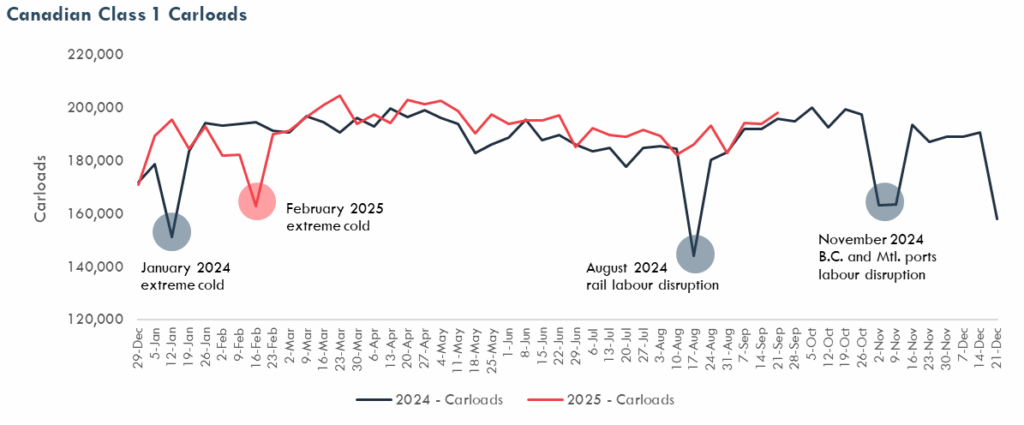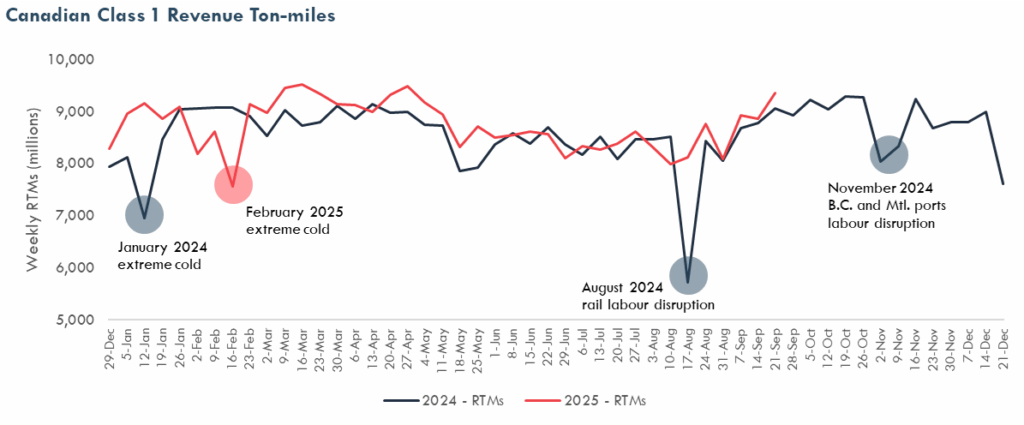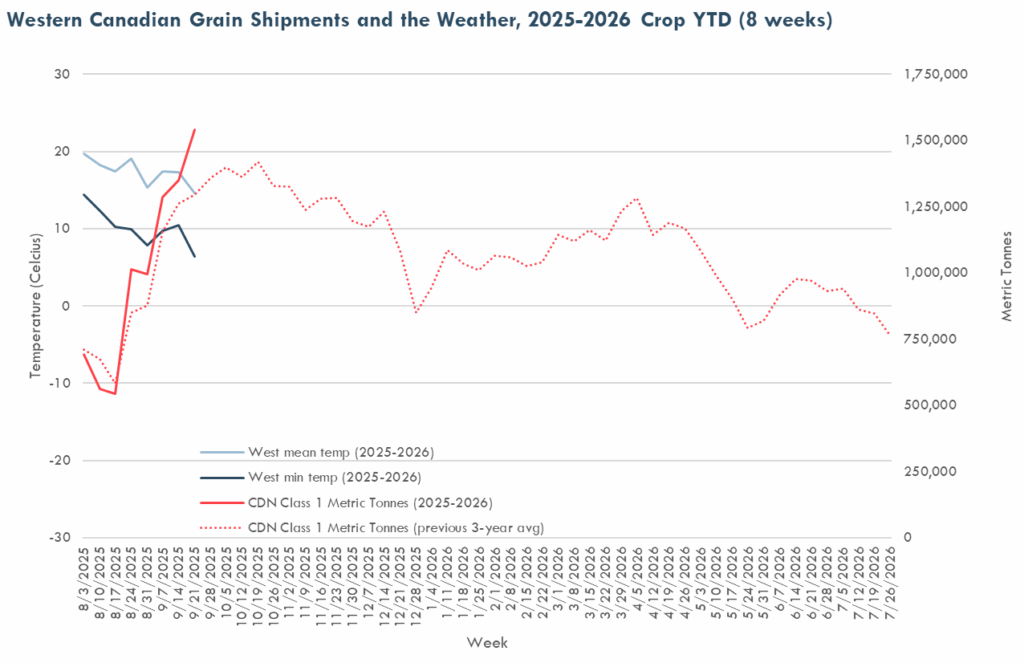Welcome to RAC’s new Weekly Traffic Dashboard. On this page you’ll find information on the latest rail traffic trends, including a breakdown by commodity: grain & fertilizers (incl. potash); intermodal; forest products; automotive; coal; metals and minerals; and energy, chemicals and plastics.
New data released every Tuesday – stay up to date with an email subscription.
Canadian Class 1 Freight Traffic
Last updated on October 7, 2025
In week 39 (September 21-27), Canadian Class 1 (CN and CPKC) network-wide freight traffic increased by 1% (carloads) and 3% (revenue ton-miles, RTMs) compared to the same week in 2024. Across their North American networks, both carloads and RTMs increased for grain & fertilizers and intermodal while decreasing for forest products and automotive. Results for other commodities were mixed. Carloads of coal increased while RTMs decreased. The opposite trend was observed for metals and minerals and for energy, chemicals and plastics, where RTMs increased but carloads decreased.
Across the first 39 weeks of 2025, Canadian Class 1 network-wide carloads were up 2% and RTMs were up 3% compared to the same period in 2024 (+167,309 carloads and +9,276 million RTMs). Grain & fertilizers led RTM growth (+6,087 million RTMs, or +6%) while growth in carloads was led by intermodal (+189,527 carloads, or +7%). Coal volumes compared favourably as well, with carloads up 5% and RTMs up 6%. Automotive carloads were down 1% but RTMs were up 8% from longer average hauls. These gains were partially offset by traffic reductions of forest products; metals and minerals; and, to a lesser extent, energy, chemicals and plastics.

* Includes potash.
The figure below shows Canadian Class 1 network-wide traffic in each week. When temperatures drop below -25 Celsius, railways are required to implement train length and speed restrictions to maintain safety, which unavoidably impact supply chain velocity and capacity. Extreme cold also impacts other parts of the supply chain. For example, terminal loading and unloading by railway customers often slows during extreme cold.
This year, in the three reporting weeks spanning February 2 to February 22, railway operations were impacted by persistent, extreme cold. Temperature data from select cities (including Thunder Bay, Winnipeg, Regina, Saskatoon, Edmonton, and Calgary) show that temperatures dropped below -25 Celsius in 19 of 21 days in at least one of those locations, compared to just 1 of 21 days in the same period in 2024.


Notes: The dates indicate the first day of the week (e.g., “5-Jan” corresponds to the week of January 5 to 11). Canadian Class 1 data includes the network-wide operations of CN and CPKC.
Western Canadian Grain
In the 2024-2025 crop year (August 2024-July 2025), CN and CPKC moved 58.6 million metric tonnes of Canadian grain and grain products – 22% higher than the previous 3-year average.
In Week 8 (September 21-27) of the 2025-2026 crop year, CN and CPKC moved more than 1.5 million metric tonnes of Canadian grain and grain products.
Over the 2025–26 crop year to date, total shipments are up 8% compared to the previous 3-year average.
Crop year-to-date grain volumes (8 weeks)
8.0 million metric tonnes | +8% vs previous 3-year average

Notes: Data on Canadian grain shipments combine volumes from CN’s Western Canadian Grain Report and CPKC’s Canadian Grain Performance Scorecard. Weather data are from Environment and Natural Resources Canada. West min temp and West mean temp are calculated as the average temperature of cities throughout the Western Canadian Grain Supply Chain, including Thunder Bay, Regina, Saskatoon, Edmonton, Calgary, and Kamloops (Vancouver was omitted because temperatures there are not cold enough to cause significant supply chain disruptions).
